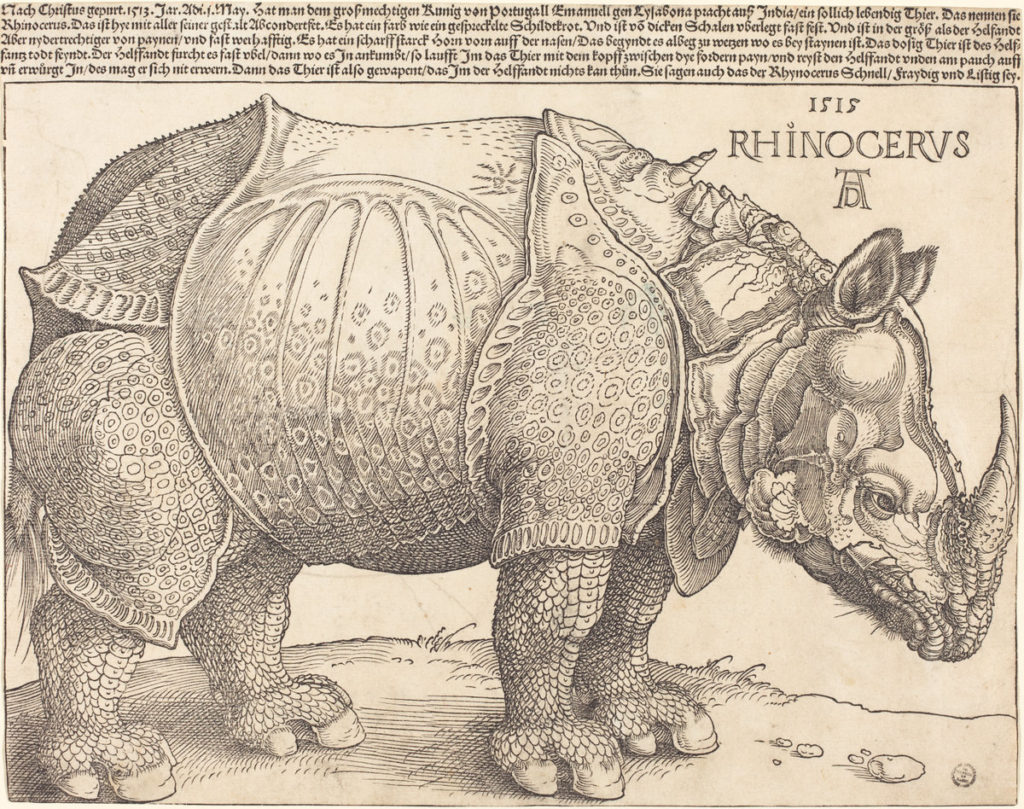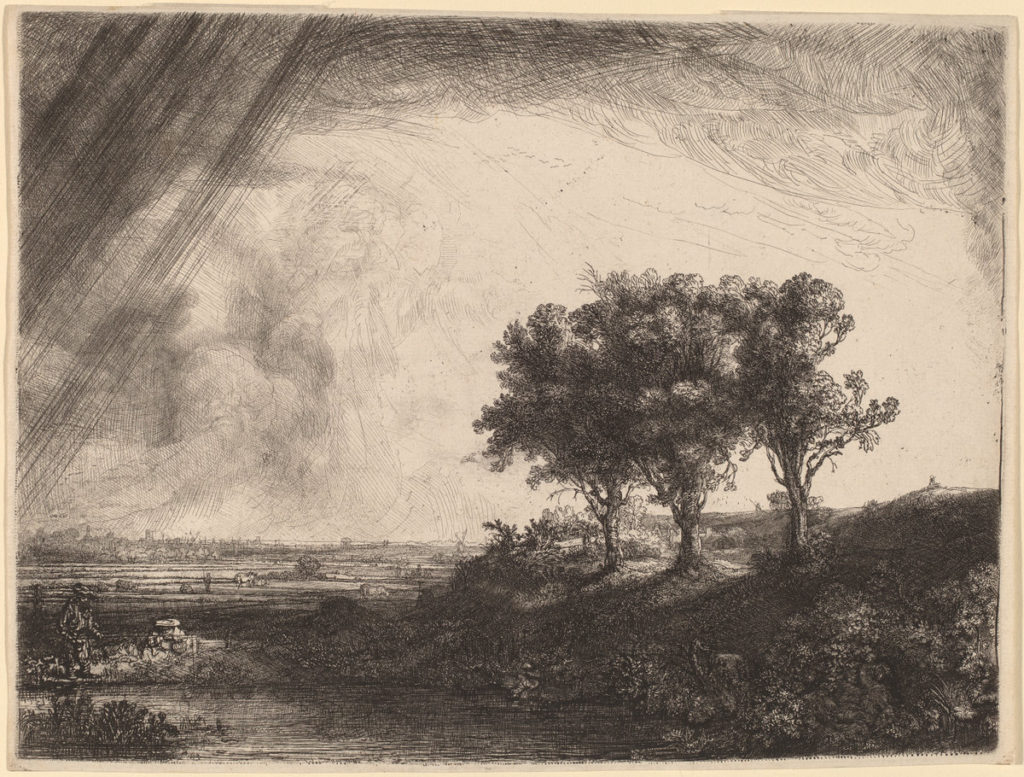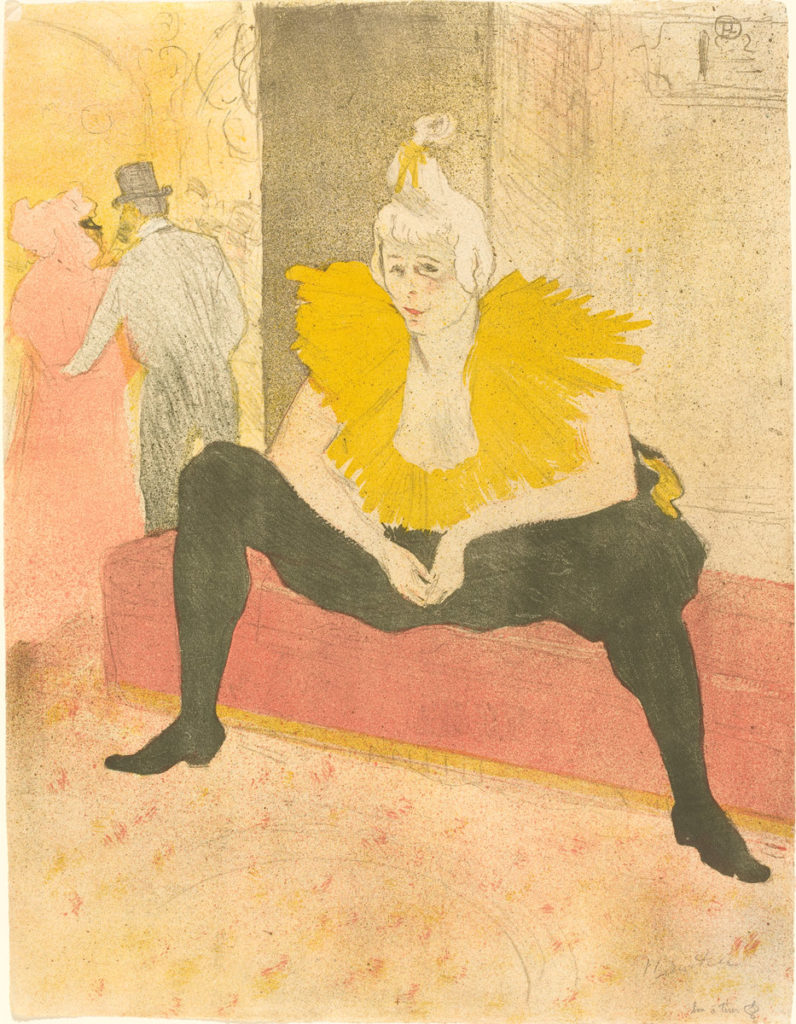Printmaking is a means of creating several images from a single original surface. Over the years techniques for making fine art prints have evolved–from the carved wood methods originating in ancient China to the more recently developed silk screen techniques used by artists like Andy Warhol. Regardless of style, printmaking has played an important role in communicating values and sharing culture to broad audiences throughout history.
Woodcut
When an artist creates a woodcut print, they start with a piece of wood. This is a relief printmaking technique. The artist then carves into the wood’s surface, leaving the parts the artist wants to be printed level. The artist then uses an ink covered roller to cover the space on the wood that has not been carved, which then becomes the image of the woodcut print. The woodcut printing technique originated in China in as early as 220 AD during the Han Dynasty. In the West, woodcut is also the oldest technique of printmaking, making its debut around 1400 AD. One of the oldest and most famous artists known for his woodcuts is Albrecht Dürer (German, 1471-1528), who perfected the woodcut technique, and whose work still sells for considerable amounts at auction today. In 2013, Dürer’s rare woodcut, The Rhinoceros, sold at auction for a total price of $866,500.

Albrecht Dürer (German, 1471-1528), The Rhinoceros, 1515, woodcut with letterpress text, image: 9.3”h x 11.7”w.
Linocut
The linocut is a printmaking technique that is very similar to the woodcut. The artist instead of using wood, uses a piece of linoleum to carve into the surface the image that will later become the print. Unlike wood, linoleum has no grain, so it is an easier medium for an artist to create his or her desired imagery. One of the most famous artists to use this method of print-making is Pablo Picasso (Spanish, 1881-1973). Picasso began using the linocut method in 1952 to make posters for the potters of Vallauris, where he was creating his body of work in ceramics. After 6 years, Picasso returned to the linocut to create his own prints, but found the technique daunting. At this time, the only way to create a linocut in several colors was to create several different color blocks to be printed one on top of the other. So, with Picasso’s ingenuity he created a more streamlined approach to creating color linocuts. Named the ‘reduction’ method, Picasso figured out that he could create a color linocut using only one block. This was accomplished by starting the printing of the linocut with the lightest color first, then Picasso would cut further into the block and print the colors consecutively from lightest to darkest. This breakthrough created some of Picasso’s most beautiful and sought after prints in his entire oeuvre, including Buste de Femme au Chapeau, 1962, linocut in colors, which sold at auction in 2007 for $665,537. View Buste de Femme au Chapeau.
Etching
The traditional form of etching is a printmaking process in which the artist takes a metal plate such as copper, zinc, or steel and covers the plate with a waxy ground resistant to acid. After covering the plate, the artist then scratches off the ground with an etching needle where the artist wants the line to appear in the final image. This process of using the needle on the plate exposes the bare metal. Once the artist is done carving lines into the surface of the plate, the plate is then dipped into a bath of acid. The acid eats into the metal where the artist has placed the lines, leaving behind the lines sunken into the plate. The ground that remains is cleaned off the plate, and the plate is then inked with an ink roller. The ink falls into the lines the acid has helped create, and the surface is wiped clean leaving the ink only in the etched lines intended by the artist. The plate is then put through a printing press with a sheet of paper. The presses high-pressure transfers the ink onto the paper, and the image is created. This process can be done several times with the same plate, which is why on many modern etchings artists will place an edition number on the sheet. The plate eventually degrades after several printings, and the artist can then choose to add to the work or re-work the lines. This creates an etching that is more than one state—meaning, the plate has been worked on more than once.
Although the process of etching dates back all the way to the Goldsmith’s in the Middle Ages, the first fine art etchings didn’t start until the 15th century. By the 17th century, the great artist Rembrandt van Rijn (Dutch, 1606-1669), started to produce some of the greatest Old Master etchings ever created. From about 1626 to 1665, Rembrandt made 300 etchings and drypoints, which to this day are still highly sought after in the auction market. Rembrandt’s etching The Three Trees, 1643, achieved $713,230 at auction in 2013, and stands as Rembrandt’s highest print auction record to date.

Rembrandt van Rijn (Dutch, 1606-1669), The Three Trees, 1643, etching, engraving, and drypoint, 8.4”h x 11”w
Known for his enthusiasm to develop his work and perfect all mediums, Picasso set out to master the technique of etching for printmaking. While Rembrandt created 300 etchings during his lifetime, Picasso created over 2,400 various types of prints throughout his career. At the age of 23, and quite poor, Picasso set out to create his first series of prints. The group of 15 etchings and drypoints known as the Saltimbanques Suite, contained the etching Le Repas Frugal, 1904—the second print the artist had ever made. The prints did not make Picasso the money he had hoped they would, and he eventually gave many away with dedications written in the margins to his friends. It was not until his dealer Ambroise Vollard purchased the plates from Picasso 11 years later that these early prints began to gain notoriety. Today, the highest auction record for Picasso’s Le Repas Frugal, 1904, is $3,057,933. View Le Repas Frugal.
Lithograph
A lithograph is a printmaking process created around 1820 that works with the knowledge that oil and water do not mix. Using a limestone, the artist will use a waxy crayon to draw the image onto the stone. After the wax is applied, the artist then chemically treats the stone with materials such as gum arabic. This thin layer of gum arabic is called the absorbed gum layer, as it sits just on top of the stone. At the same time, in the places where the greasy drawing is etched with a mixture of nitric acid and gum arabic that is applied to the entire surface, the stone’s surface forms a grease reservoir directly below these areas. The chemical product of the combined grease, acid, and limestone serves as the stone’s memory of the drawing, so that during processing, the image is always there though not always visible. The Museum of Modern Art New York has created a great video that explains this beautiful and chemically complicated process. You can view this video here. Many important 19th and 20th century artists have used the medium for everything from Advertising Posters for Liquor, to fine art prints by artists such as Jasper Johns, Ed Ruscha, Robert Motherwell, Marc Chagall, Wayne Thiebaud, amongst many many others. Henri Toulouse-Lautrec (French, 1864-1901), used his skills in lithography to attract people to the Moulin Rouge in Paris. Today, the highest price paid at auction for one of Toulouse-Lautrec’s lithographs is The Seated Clowness (Miss Cha-U-Kao), from Elles, 1896, that hammered at auction for a total of $882,500.

Henri Toulouse-Lautrec (French, 1864-1901), The Seated Clowness (Miss Cha-U-Kao), from Elles, 1896, lithograph in colors, 20.5”h x 15.7”w
Screen print
Screen printing as a printmaking method was invented in 1910. Throughout the 20th century and into the present day, artists use this method to create works of art. The process starts with a mesh cloth used to transfer ink onto a substrate, except in areas made impermeable to the ink by a blocking stencil. A squeegee is then used to pull the paint through the mesh onto the substrate, where the screen print is then born. The Minneapolis Museum of Art has created a video that walks through the process of screen printing. This video can be viewed here. Arguably the most famous artist to use this process of printmaking is Andy Warhol (American, 1928-1987), who even used his studio named ‘The Factory’ in order to create as many screen prints as he could. His highest selling screen print to date is 1966’s Four Marlons, sold in 2014 for $69,605,000. See photos of Warhol working on screen prints.